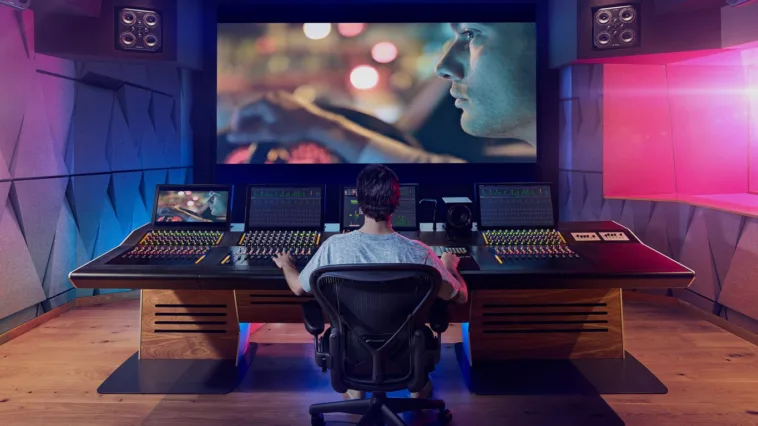A truly unforgettable music video isn’t just watched; it’s experienced. It’s the difference between a routine edit and a masterpiece that pulls viewers in, stirs emotions, and stays with them long after the final frame.
Editing music videos isn’t just about cutting clips. It’s about weaving rhythm, mood, and emotion into a seamless visual symphony that amplifies the music track. Every frame, every transition, every visual effect, and every cut must be intentional, creating a flow that feels effortless yet powerful.
At Motion Edits, our Music Video Editor spent years perfecting this craft, working alongside industry professionals who push creative boundaries. Mastering these five secrets will set your work apart if you want your music videos to stand out and resonate with audiences.
1. Synchronize Visuals with the Beat
One of the most fundamental rules of music video editing is rhythm synchronization. How visuals align with a song’s beat determines the video’s impact. If the cuts in the music video lag behind the beat, the visuals will feel sluggish and disconnected. But when each movement—a dancer’s spin, a jump, or a flashing light—hits precisely on the beat, the video becomes an extension of the music. Think of music videos like Beyoncé’s Single Ladies, where every frame moves in perfect harmony with the rhythm, creating an unforgettable experience.
How we do it:
- Use beat markers in our editing software to map out key moments in the song. These markers help time transitions, effects, and cuts in a way that enhances the music.
- Experiment with cutting on different beats—sometimes on every beat for a high-energy track, or every few beats for a more cinematic feel.
- Adjust clip speed to match the tempo. If a particular shot feels too long or too short, speed adjustments can keep the pacing in sync with the music.
2. Masterful Use of Color Grading
Color grading is more than just adjusting brightness and contrast or adjusting white balance —it’s a powerful storytelling tool. The right color palette can transform the mood of a music video, making it feel vibrant, melancholic, nostalgic, or futuristic. For instance, a warm, golden tone can make a love song feel nostalgic, while a cool, desaturated palette can add a moody, cinematic touch to a heartbreak anthem.
Techniques to enhance color grading:
- Establish a consistent color scheme that complements the song’s mood and theme.
- Use LUTs to maintain consistency across different shots.
- Film Emulation and Look Development can really level up your music video
- Create a signature look—some of the best music videos have instantly recognizable color palettes that reinforce their identity.
3. Visual Effects and Special Effects
A lot of music videos go heavy on visual effects. These could be limited to a couple of shots or the directors could go all out for the entire length of the video where they would need a lot of these effects done. These effects could be keying, green screen, tracking, adding CG objects, video clean ups and some of the other form of compositing.
How we go about doing visual effects
- AI videos generations. Depending on what the project warrants these AI scenes could be composited into love action footage to make something different and new.
- We do all the vfx works on After Effects and Blender that helps us achieve complicated compositions seamlessly
- CGI also plays an important role in Music Videos. We can help create CG environment and CG elements and composite them seamlessly into the live action footage.
4. Telling a Story with Editing
Music videos don’t just showcase performance; they tell a story. Even abstract or visually experimental videos have some form of narrative that keeps viewers engaged. If a music video feels random, it loses its impact.
Think of Michael Jackson’s Thriller—it’s not just a dance performance; it tells a gripping horror story. Without the narrative of a man transforming into a werewolf and leading a group of zombies, it would just be another dance video, losing its iconic impact.
How to add storytelling elements:
- Identify a theme that complements the song. It could be a love story, a journey, or a conceptual representation of emotions.
- Structure the edit to have a clear beginning, middle, and end.
- Use visual motifs, symbolic imagery, or recurring elements to give the video a deeper meaning.
- Interweave performance shots with narrative sequences to keep the video dynamic.
A well-edited story, even in a short three-minute video, can leave a lasting impression on viewers and make your work more memorable.
The Final Cut: Bringing It All Together
Music video editing is all about delivering an artist’s creative vision through a seamless harmony of sound and visuals.
At Motion Edits, we specialize in turning raw footage into stunning music videos that captivate audiences. Whether you’re a videographer, cinematographer, or filmmaker, our expertise can help you bring your vision to life.
If you want to elevate your projects and create music videos that leave a lasting impact, reach out to us today.
